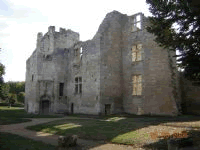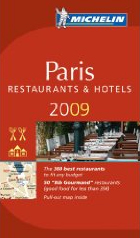Perigueux The White Perigord

- SUBSCRIBE
- ALREADY SUBSCRIBED?
BECOME A BONJOUR PARIS MEMBER
Gain full access to our collection of over 5,000 articles and bring the City of Light into your life. Just 60 USD per year.
Find out why you should become a member here.
Sign in
Fill in your credentials below.
 A recent visit to this stunning region revived tastes and smells as well as providing visual splendors. I spent some time in the city of Perigueux where I tasted black truffles, goose paté or confit as they call it. I munched on fresh home grown walnuts and enjoyed the walnut oil on my fresh salads. I drank Bergerac wines and enjoyed the visual delights that brought me there in the first place. I found myself among local inhabitants who offered warm hospitality and that sense of welcome that is their tradition.
A recent visit to this stunning region revived tastes and smells as well as providing visual splendors. I spent some time in the city of Perigueux where I tasted black truffles, goose paté or confit as they call it. I munched on fresh home grown walnuts and enjoyed the walnut oil on my fresh salads. I drank Bergerac wines and enjoyed the visual delights that brought me there in the first place. I found myself among local inhabitants who offered warm hospitality and that sense of welcome that is their tradition.
Always aware of frugality, I selected the local Ibis Hotel, because of its proximity to the l’Isle River and the old city. High above me was the giant Cathedral St. Front, with its Byzantine styled domes. Around me would be the lanes of the medieval city. I would be in the heart of this great city. I reserved the hotel, sight unseen, and was blown away by its charm and décor. It was a find and I highly recommend it, just near the Quai on Boulevard Georges Saumande. Even the breakfasts served outside, facing the water, added to the ambiance.
My room looked out across the peaceful river, and the Vieux Moulin landmark was just outside my window. This ancient structure once acted as a storage and lookout tower on the ancient river. It stands as a silent sentinel to a lost age. I couldn’t take my eyes off its stately solitude. It’s like nothing I’d ever seen.
I roamed the ancient streets, took a tiny tourist train ride around the old city, and snapped shots of the old towers that once dotted the defensive wall. I ate in the tiny squares, away from traffic and noise. I just roamed around enjoying this oasis from 21st century sounds. Yes, there is another area of town with shops, cars and broad streets, but that was hardly why I was there.
On the second day I visited the tourist office. Here I learned of the Musee-Atelier du Trompe-L’oeil and Décor Peint. I had just read an article about this ancient form of ‘illusion painting’ and had seen examples of ceilings that had been decorated in this art form, even in St. Petersburg’s Hermitage. I knew too that street painters were  doing this type of work in many cities, especially in Germany. I headed for the museum. There I met the Directrice, Ann-Marie Cherrier. It is her vision that gave life to this unique workshop-museum. She comes from generations of weavers and a family of oriental-style painters. Trompe-l’oeil (trick of the eye) is her life’s passion. Mistress of the play of shadow and light, she has worked on many Bordeaux chateaux and painted false marble on the hull of a 25 meter sailing yacht. Her work can be seen as frescos on the outside of houses and churches in the Dordogne region.
doing this type of work in many cities, especially in Germany. I headed for the museum. There I met the Directrice, Ann-Marie Cherrier. It is her vision that gave life to this unique workshop-museum. She comes from generations of weavers and a family of oriental-style painters. Trompe-l’oeil (trick of the eye) is her life’s passion. Mistress of the play of shadow and light, she has worked on many Bordeaux chateaux and painted false marble on the hull of a 25 meter sailing yacht. Her work can be seen as frescos on the outside of houses and churches in the Dordogne region.
After a guided tour I came to appreciate this art form that I had seen many times but never really understood. It is art to fool the eye. I was certain I was walking on mosaic tiles until I reached down and touched a surface of painting. I looked at vases on two shelves by Jean-Pierre Haenni. Later I took Ann-Marie’s picture, which looked as if she were leaning on the shelves. I agreed with Diderot who said, “The hand touched a flat surface and the eye, always seduced, saw relief…” I was awed by the effects that made marble, wood grain, tapestries, mosaics, frescos and furniture decoration come alive.
The museum is set in a transformed old factory on a quiet street. There is a reading and library area, a training workshop, a display and sales area, and a patio tearoom available in clement weather. There are exhibits by famous artists including furniture decorations, frescos and canvasses.
I discovered that the museum also incorporated a workshop where students learned the various techniques of imitation stone, lift-off frescoes, mosaics and tapestry. This art form, dating back to ancient prehistoric times, did indeed trick my eye.
I visited the workshop and the collection. It was the highlight of my day in a city filled with highlights. I recommend it without reservation for those interested in art. This is a unique museum and artists’ studio set in a unique town in the middle of one of the most charming regions in France. One can spend a day or a month traveling through this region.
Perigueux was originally two cities, one ecclesiastical, the other mercantile. The oldest remains can be seen today. Start your visit at the Pont des Barris. Walk up rue Daumesnil and spend some time in the Cathedral. Then, with a map, you can wander in and out of the narrow streets and enjoy one of the most charming towns in central France.
The old city is a warren of tiny cobbled streets lined with boutiques, buskers, and renaissance houses. But there is modernity as well, such as the greenhouse-like Lycee Jay-de-Beafort. You can see 2000 years of history in one city. And in the countryside beyond there are some of the most splendid and celebrated chateaux in France. One to visit is Chateau Hautefort. More about this ancient marvel in another article. It was my enchantment with Hautefort that caused me to set my latest novel there. (Details on request).
But Perigueux is only the beginning. There are many visual, culinary, artistic and historical pleasures in the Perigord region. I will visit Les Eyzies, Montignac, Brantome, Hautefort, with its gigantic Chateau, and the Chateau of Mme. De Pompadour, equipped with stables and a giant hippodrome. Watch for more articles and holiday suggestions on these pages over the next few weeks.
~~~
Musee-Atelier du Trompe-L’oeil
The museum is open April 1st to September 30th from 10:30 -12:30 and from 14:30 to 18:30 Tuesday to Saturday. Sundays from 15:00-18:00.
Times are more restricted from Oct. 1st to March 31st. They are closed on Mondays and Bank Holidays. Groups of 25 people can be accommodated but reservations are recommended in advance. Disabled access and parking are available. The museum is on one floor for easy access.
The address is 5, rue Emile Combes, 24000 Perigueux, France, near the Eglise de la Cité. You won’t have trouble finding it. There is a modest entrance fee.
I suggest you call ahead at 05 53 09 84 40 or ask at the Tourist office.
The email address at the museum is [email protected] and you can learn a great deal from their web site at http://www.museedutrompeloeil.com/.
For more information about the city and its sights visit the Office de Tourism at 26, Place Francheville or call Tel: 05 53 53 10 63.
Web: http://www.perigueux.fr/ for more information
Copyright Arnie Greenberg


